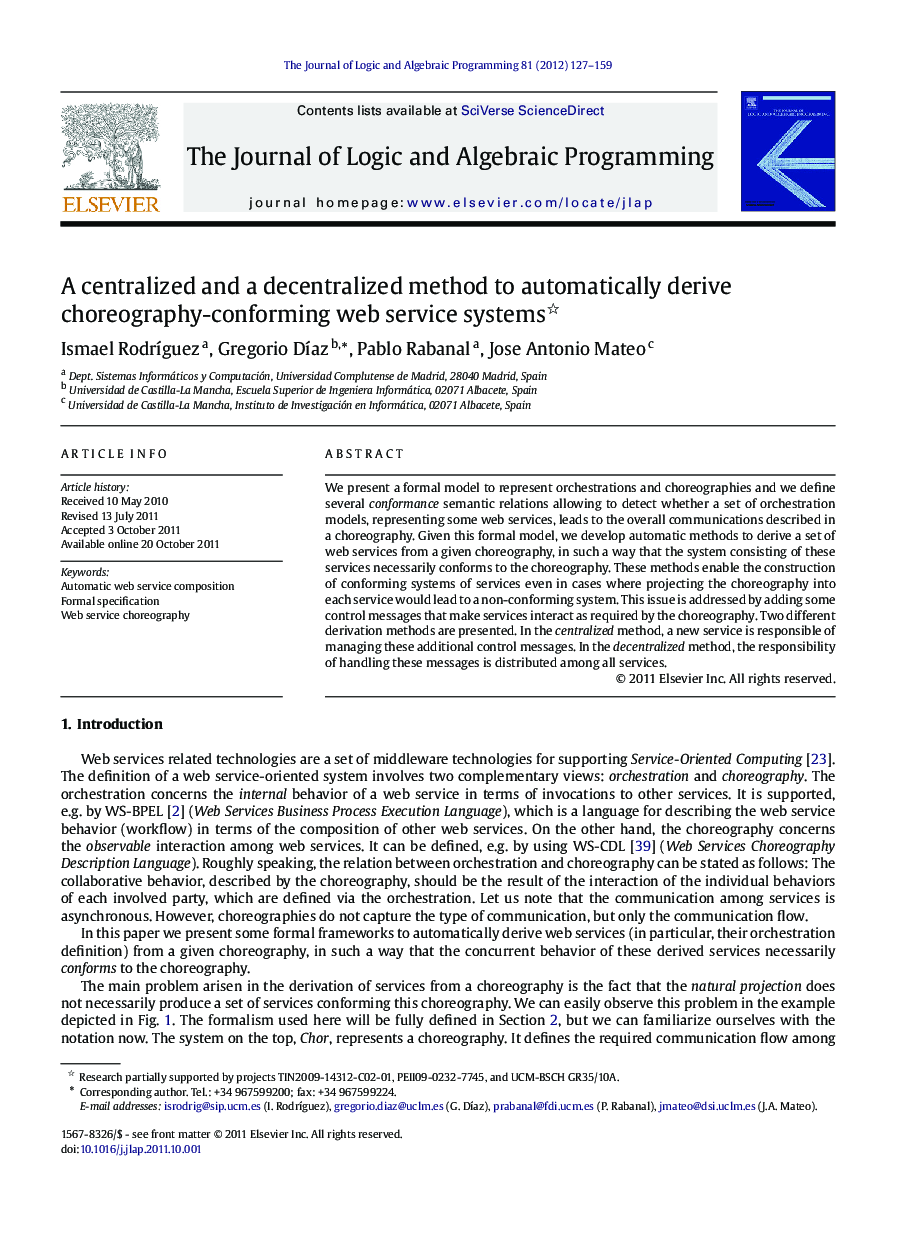| کد مقاله | کد نشریه | سال انتشار | مقاله انگلیسی | نسخه تمام متن |
|---|---|---|---|---|
| 431026 | 1441257 | 2012 | 33 صفحه PDF | دانلود رایگان |

We present a formal model to represent orchestrations and choreographies and we define several conformance semantic relations allowing to detect whether a set of orchestration models, representing some web services, leads to the overall communications described in a choreography. Given this formal model, we develop automatic methods to derive a set of web services from a given choreography, in such a way that the system consisting of these services necessarily conforms to the choreography. These methods enable the construction of conforming systems of services even in cases where projecting the choreography into each service would lead to a non-conforming system. This issue is addressed by adding some control messages that make services interact as required by the choreography. Two different derivation methods are presented. In the centralized method, a new service is responsible of managing these additional control messages. In the decentralized method, the responsibility of handling these messages is distributed among all services.
► A formal model to compose web services in asynchronous environments.
► Two levels of a composition: choreography (global) vs. orchestration (local).
► Formal conformance relations to compare orchestrations of services vs. choreographies.
► Derivation of correct orchestrations from choreographies even when projecting fails.
► Automatic centralized and decentralized derivation algorithms with correctness proofs.
Journal: The Journal of Logic and Algebraic Programming - Volume 81, Issue 2, February 2012, Pages 127–159